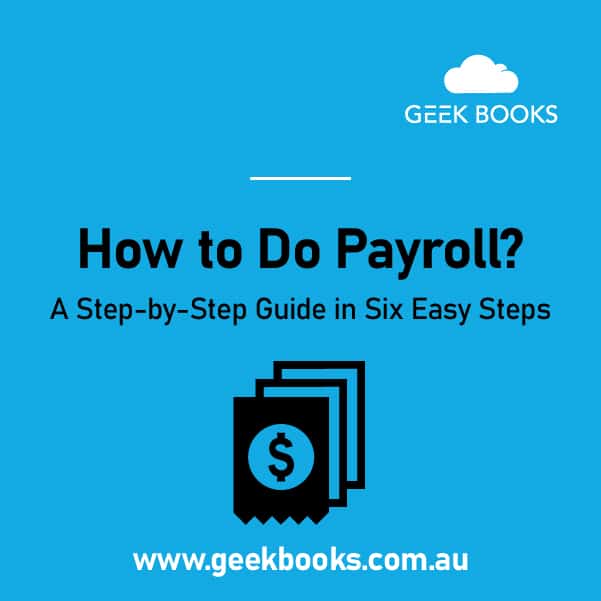In the fast-paced business world, taking on payroll management can feel like learning a new language.
It’s no surprise that small business owners can spend an astounding average of almost 5 hours per pay period on payroll tasks alone!
What if there was a way to streamline the payroll process?
Then you could reinvest your valuable time into running your business, developing fresh ideas, or simply enjoying the fruits of your labour!
To help you do just that, this guide will break down the process of how to do payroll yourself into six easy steps.
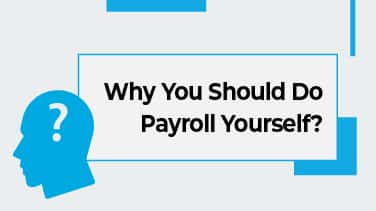
Why You Should Do Payroll Yourself
When considering how to do payroll, you might initially feel a bit daunted.
But managing your payroll has several significant advantages.
- Cost savings: Hiring an in-house payroll specialist can cost between AUD $65,000 and $75,000 per year. In addition to paying their salary, overhead costs such as superannuation, leave, and additional office space and resources can add 20-30% or more to the total cost. Outsourcing payroll to an accounting or bookkeeping firm is considerably more affordable but still an added expense. The average hourly rate for bookkeepers ranges from $25 to $50 an hour, depending on experience and location. These costs can be difficult to manage if your small business operates on a tight budget. By taking on the task yourself, you can potentially save hundreds or even thousands of dollars per year.
- Time savings: Using automated payroll software can reduce the time spent on payroll tasks by up to 80%. So if you were spending 10 hours a month on payroll, you could reduce that to just 2 hours with the right software.
- Greater control: When you handle payroll yourself, you can ensure your employees are paid accurately and on time. Plus, you’ll have a thorough understanding of exactly where your money is going.
- Confidentiality: Payroll contains sensitive information. Keeping this process in-house can reduce the risk of this information being mishandled or misused.
It’s important to note that the money and time savings for doing your payroll can vary greatly depending on the size of your business, the complexity of the payroll, the industry, and your familiarity with payroll processes.
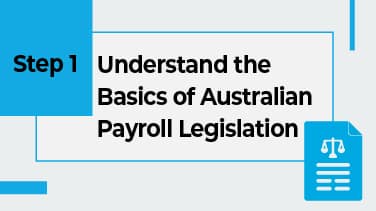
Step 1: Understand the Basics of Australian Payroll Legislation
To get started with managing your payroll, first familiarise yourself with Australian payroll laws, including
- The Fair Work Act 2009
- Pay As You Go (PAYG) withholding tax system
- Superannuation Guarantee contributions
Then you’ll have a basic understanding of minimum wage, overtime, leave entitlements, and tax withholdings.
The Fair Work Ombudsman website is a great place to familiarise yourself with Australian payroll laws.
It’s an invaluable resource packed with up-to-date information and plenty of guides and fact sheets to help you learn your obligations as an employer.
The Australian Taxation Office (ATO) website is another treasure trove of knowledge.
It provides extensive details about the PAYG withholding tax system, Superannuation Guarantee contributions, and other tax-related matters.
The ATO also offers free webinars, online courses, and other educational resources to get you up to speed.
With these resources at your fingertips, you’re ready to get underway!
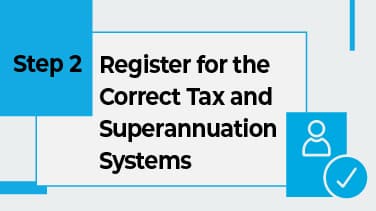
Step 2: Register for the Correct Tax and Superannuation Systems
Next, register your business online with the ATO for the PAYG withholding.
This usually takes a few days to process. However, receiving your PAYG withholding registration confirmation can take up to 28 days.
You’ll also need to choose a default superannuation fund for your employees.
Once you’ve researched and chosen a high-performing fund, the registration process typically doesn’t take more than a few days.
Then you must register with the Small Business Superannuation Clearing House (SBSCH) to make super payments.
The ATO offers this service to allow small businesses to pay their super contributions in one transaction to a single location, even if their employees have chosen different super funds.
The SBSCH then distributes the payments to each employee’s chosen fund.
Allowing ample time for these registrations is crucial so you’re ready to process payroll on time.
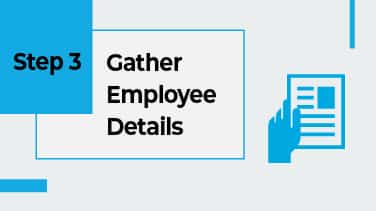
Step 3: Gather Employee Details
To set up payroll, you need to collect information from your employees, including their tax file number, bank account details, and chosen superannuation fund.
If an employee doesn’t have a chosen superannuation fund, you must contribute to the “default” super fund you’ve selected.
This fund must be a complying fund that offers a minimum level of life insurance.
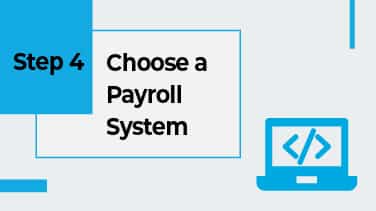
Step 4: Choose a Payroll System
You’ll need to choose a payroll software program that suits your business’s needs.
Whichever program you choose must comply with Single Touch Payroll (STP).
STP is a mandatory Australian government initiative that requires all employers to report salaries, taxes, and superannuation information to the ATO in real-time each time they pay their employees.
Additionally, you want to choose a software program that can help manage payroll tax.
Payroll tax is a state-based tax you must pay when your total wages (including salaries, benefits, and certain contractor payments) exceed a specific threshold set by the state or territory you live in.
Cloud-based payroll systems are generally the most recommended option for small to medium-sized businesses because of their ability to automate many aspects of the payroll process, reducing manual data entry and the potential for errors.
They also allow for real-time updates you can access from anywhere, which is helpful in today’s increasingly remote and flexible work environment.
Most importantly, many cloud-based systems comply with STP, automatically reporting payroll information to the ATO each time you pay your employees.
Having this taken care of will make your life much easier!
Popular cloud-based payroll programs include
- Xero
- MYOB
- QuickBooks Online
- Sage Business Cloud Payroll
- KeyPay
The best payroll system for your business depends on your specific needs and circumstances, such as your number of employees, budget, and comfort level with technology.
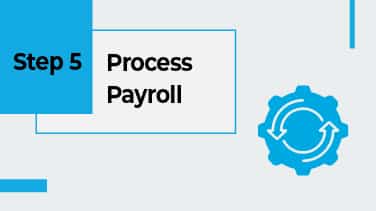
Step 5: Process Payroll
Now it’s time to process payroll.
Based on your established pay schedule (weekly, fortnightly, or monthly), calculate each employee’s gross pay, subtract the necessary withholdings for tax and superannuation, and then issue the net pay to their bank account.
To calculate an employee’s gross pay, multiply their hourly wage by the number of hours worked in the pay period.
To calculate the pay for salaried employees, take their yearly salary and then split it equally across the total number of pay cycles in a year.
Calculate tax withholdings using the tax scales provided by the ATO based on the employee’s declared income and tax offsets.
Use the employee’s Tax File Number (TFN) and their completed TFN declaration form to help with this.
Superannuation contributions are 11% (as of July 1, 2023) of the employee’s ordinary earnings, up to a certain limit.
Many payroll software programs can automate these calculations based on the data you enter for each employee.
But it’s essential to understand the basics of these calculations and to keep up-to-date with changes in tax and superannuation laws.
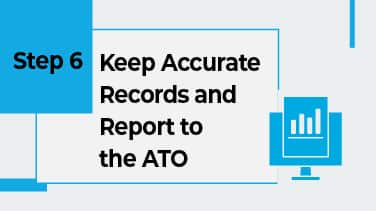
Step 6: Keep Accurate Records and Report to the ATO
Lastly, always keep detailed payroll records as required by law, including
- Employee details like name, address, date of birth, and employment start date.
- Employment terms such as full-time, part-time, or casual.
- Wages paid for each pay period and year-to-date.
- Tax amounts withheld from each pay.
- Details of superannuation contributions made.
- Leave accruals and usage.
- Overtime hours and payment.
- Any agreements or contracts that determine pay rates.
- Records of any bonuses, allowances, deductions, or reimbursements.
- Copies of Tax File Number declarations or withholding declarations.
These records will help you complete your annual tax return and BAS.
A Business Activity Statement (BAS) is a form submitted quarterly to the ATO if your business is registered for Goods and Services Tax (GST) to report and pay its tax obligations.
Your business must register for GST if its annual turnover is $75,000 or more or is expected to reach that threshold.
Accurate records are also vital in the event of disputes or audits.
Frequently Asked Questions
How Long Do Payroll Records Need To Be Kept?
Australian law states you must keep payroll records for at least seven years.
By maintaining these records, you’ll be able to answer any questions that might pop up in the future about your business’s financial history, particularly in the case of an audit, an employee dispute, or if you need to confirm past employment and income details.
What Software Do I Need To Do Payroll Myself?
Popular payroll software options include Xero, MYOB, and QuickBooks Online.
They help reduce errors by automating wage, tax, and superannuation calculations. And as all these programs are cloud-based, you can access your payroll information anywhere, anytime.
Any software you choose must be Single Touch Payroll (STP) compliant. STP enables you to report your payroll information to the ATO each time you pay your employees.
Be sure to do your research, as choosing the right software will simplify the payroll process!
Do I Need a Payroll Account To Pay Myself?
Paying yourself can be a bit different compared to paying your employees.
You don’t necessarily need a separate payroll account to pay yourself.
However, maintaining a clear distinction between business and personal finances is crucial.
Paying yourself a salary or wage (just as you would any other employee) from your business account into your personal account is generally recommended.
If you are a sole trader, you can draw money from your business account as ‘drawings’.
But if you are operating a company structure, you could pay yourself a salary or dividends.
It’s best to consult with a tax professional to determine the best approach for your situation.
Should I Outsource My Payroll?
While doing your payroll can offer valuable financial insights and control and possibly save money, outsourcing can be a wise choice for many businesses. Why?
To save time. Even though the right payroll system can save you time once you get the hang of using it, payroll can still be time-consuming and complex, especially as your business grows or when tax laws change.
Outsourcing your payroll to a trusted partner, like a bookkeeping company, allows you to focus on what you do best- running your business.
How can a payroll expert help you? By
- Handling payroll complexities.
- Staying updated with the latest regulations.
- Managing calculations.
- Ensuring timely and accurate payments.
This kind of assistance not only saves you time but can also help avoid costly mistakes.
So, while you certainly can handle your payroll, outsourcing is an option worth considering for its convenience and peace of mind.
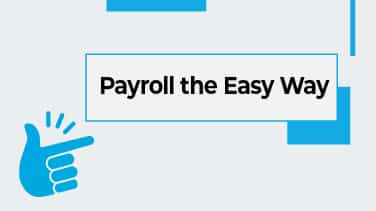
Payroll the Easy Way
So what are those six steps again for how to do payroll yourself?
- Understand the basics of Australian Payroll Legislation
- Register for the correct tax and superannuation systems
- Gather employee details
- Choose a payroll system
- Process payroll
- Keep accurate records and report to the ATO
Now you’re ready to tackle your payroll!
But what if you decide outsourcing payroll is the way to go for your business?
The experts at GeekBooks are here for you! We’re the perfect partner to help with your payroll needs.
We can confidently say that for these reasons:
- Expertise: Our team of professionals has in-depth knowledge and understanding of payroll management and compliance regulations.
- Custom solutions: Whether you run a small startup or a large corporation, we’ll devise a tailored payroll strategy that suits your business’s unique needs.
- Virtual convenience: Our virtual payroll services allow you to access top-notch payroll solutions regardless of your business location.
- Customer-focused approach: At GeekBooks, you’re not just another client but a valued partner. We’re committed to your satisfaction and success, offering a 30-day money-back guarantee.
- Scalability: As your business grows, your payroll needs will change. We offer scalable payroll solutions to grow with you so you always have the right level of support.
Hassle-free, secure payroll management is just a click or phone call away!
Complete our online booking form or contact us on 02 9158 3591.


